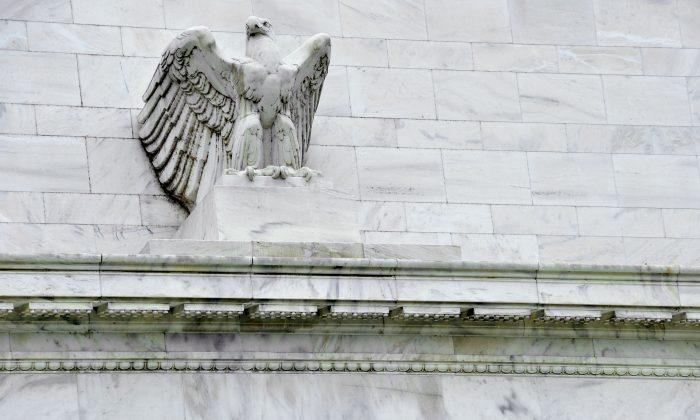Money should not be a complicated thing. Earn it, spend it, save it, and sometimes you'll have to borrow it. Yet, the way money comes into existence has a profound impact on how we lead our lives.
Most people think the Federal government issues money. This is not true for several reasons. First, the Federal Reserve issues dollar notes, which make up the bulk of currency in circulation ($1.23 trillion), but the Federal System is privately owned and not part of the U.S. government.
Second, the rest of what we perceive as money is created by the banking system. Nowadays, most payments, especially large ones, are electronic and go through our checking accounts. The monetary measure M2 includes checking accounts and time deposits and stands at $11.2 trillion.
Given that there is only around a trillion in paper dollars, but we use another $10 trillion to make payments and keep savings, the question arises where does the $10 trillion come from.
It has been created, out of thin air, by private banks. Banks only have to hold 10 percent of their liabilities (that is, deposits) in cash supplied by the Fed. The rest of what shows up as a positive balance in your checking account or time deposit is virtual money created by the banking system.
Every time a bank gives out a loan, it just creates two new entries on its balance sheet. One in the form of a loan for a house or a car, the other one in the form of a deposit into the account of the person who wants to buy the house of the car. Everything happens at the push of a button. This process also applies to credit card purchases.
As newly created credit money is being spent, it transfers from one deposit account to another in the banking system and forms part of the $10 trillion money stock.
No Right
This system has several problems. First, private entities should not reap the benefits of seigniorage, or the process of creating money, for the same reason private production of bills or coins, also called counterfeiting, is outlawed.
Banks have the incentive to create money via the credit system to benefit employees and shareholders, not the common good. This has been demonstrated time and again through numerous credit bubbles, such as the latest subprime disaster. Banks just chase profits and try to get rid of the risks through securitization and government bailouts—not a very efficient system.
It gets worse because banks charge interest on the money they have created out of thin air, without expending any effort. Banks are also the first lender to the government, before they sell on Treasury debt to the public. So the third largest expense in the Federal budget is interest payments on the Federal debt, but prior to the establishment of the Fed, this was not the case.
Public Benefit
Instead, money should really be created for the public good by the government, as it was originally intended by the Constitution.
Former Congressman Dennis Kucinich (D-Ohio) introduced the NEED Act (H.R. 2990) to remedy these problems in 2011, but the bill didn’t pass.
However, it includes most elements of the Chicago Plan of the 1930s, proposed by Irving Fisher of Yale and Henry Simons of the University of Chicago: Give the right to issue money back to the federal government.
If the government can create money, it doesn’t have to borrow and pay interest. It could then spend money on projects that will likely have a positive return for the public, such as improvements in infrastructure, which are badly needed.
Yes, there is always a risk the government would abuse its printing power. However, the track record of the banking system as a whole is dismal—making few loans to small business this year, with almost everything going into student loans—and its incentives are skewed from the outset toward private profit.
Government, at least in theory, works for the public, and researchers uncovered successful periods of government issued money in U.S. history that did not lead to hyperinflation.
Intellectual Support
The first person to rekindle interest in this plan was Stephen Zarlenga in 2006, president of the American Monetary Institute. His decadelong research into the history of money culminated in the book “The Lost Science of Money,” a 736-page behemoth and definitive study of monetary history.
It has since then garnered support by other scholars, such as professor Joseph Huber of Halle and professor Kaoru Yamaguchi of Berkeley as well as members of the International Monetary Fund.
Support in Washington, however, is low. Ben Bernanke knows about the framework; he acknowledged as much at a recent conference in Florida, but did not reveal his position on it.
When Pat Barry, principal at advisory firm Joseph Barry Co. and a major proponent of the plan asked Bernanke at the conference, he grinned and said, “Simons?” When Barry asked him whether he liked the plan, he immediately stonewalled, “I can’t answer that here.”
No Ban
Of course, this whole exercise would not ban or get rid of banks. It would merely require them to become the intermediaries they are supposed to be. Source deposits and give out loans to businesses and individuals using government issued money.
They could still charge interest, but they would have to absorb losses on loans with their own equity, making them less prone to gambling in unprofitable ventures such as subprime real estate. No more monopoly profits.
Because banks would have all their demand deposits reserved, bank runs would be a thing of the past, and business cycles would be a lot smoother because domino chains of margin calls could be avoided. These are the findings of Jaromir Benes and Michael Kumhof of the IMF.
The plan sounds radical? Since most people already think the government issues our money and banks are merely taking in deposits and loaning them out to businesses, it really shouldn’t.






Friends Read Free